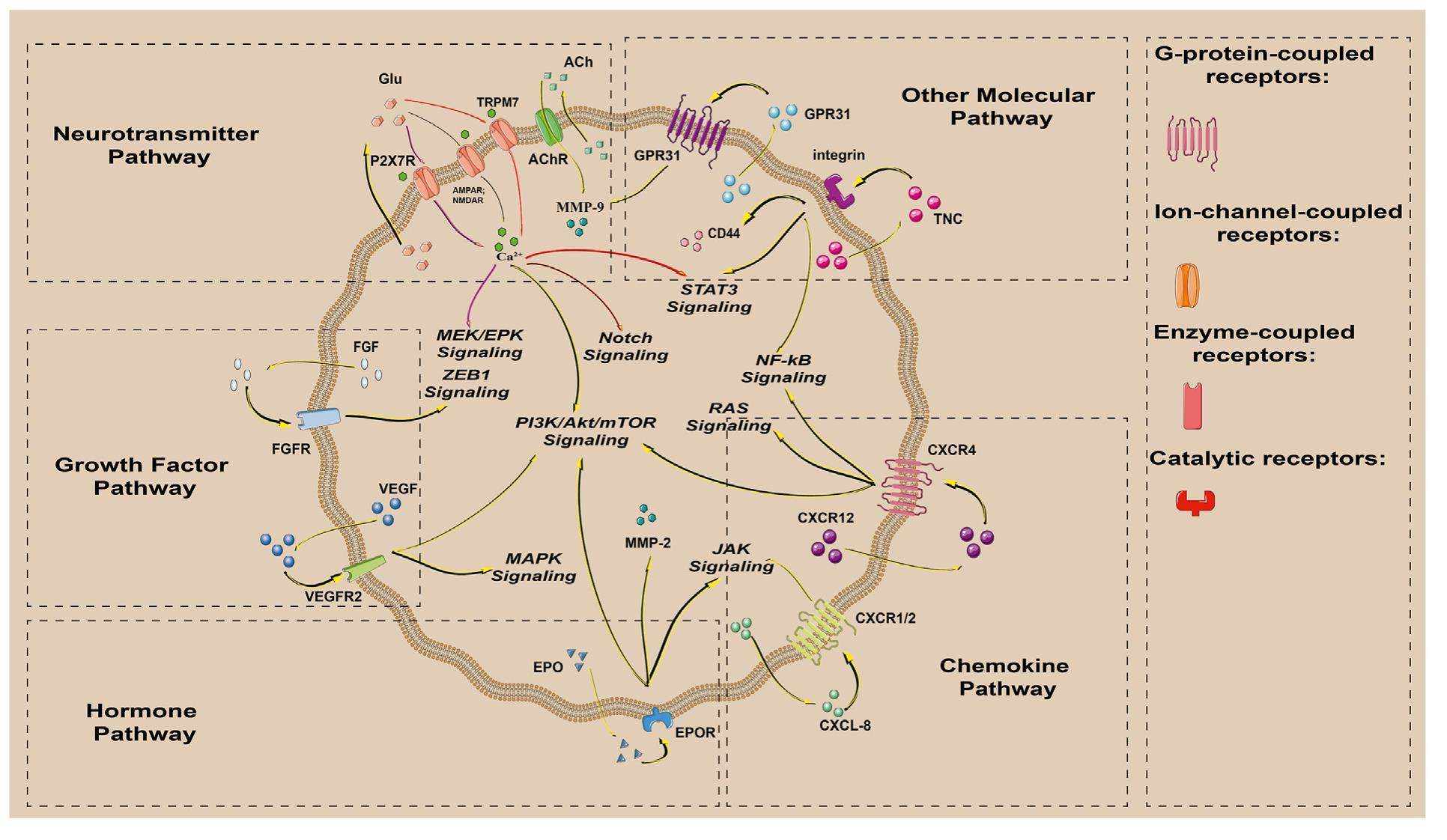
Crosstalk between glioblastoma and tumor microenvironment drives proneural-mesenchymal transition through ligand-receptor interactions


Glioblastoma (GBM) is the most common intrinsic and aggressive primary brain tumor in adults, with a median survival of approximately 15 months. GBM heterogeneity is considered responsible for the treatment resistance and unfavorable prognosis. Proneuralmesenchymal transition (PMT) represents GBM malignant progression and recurrence, which might be a breakthrough to understand GBM heterogeneity and overcome treatment resistance. PMT is a complicated process influenced by crosstalk between GBM and tumor microenvironment, depending on intricate ligand-receptor interactions. In this review, we summarize the autocrine and paracrine pathways in the GBM microenvironment and related ligand-receptor interactions inducing PMT. We also discuss the current therapies targeting the PMT-related autocrine and paracrine pathways. Together, this review offers a comprehensive understanding of the failure of GBM-targeted therapy and ideas for future tendencies of GBM treatment.
